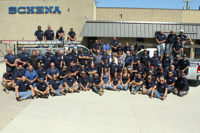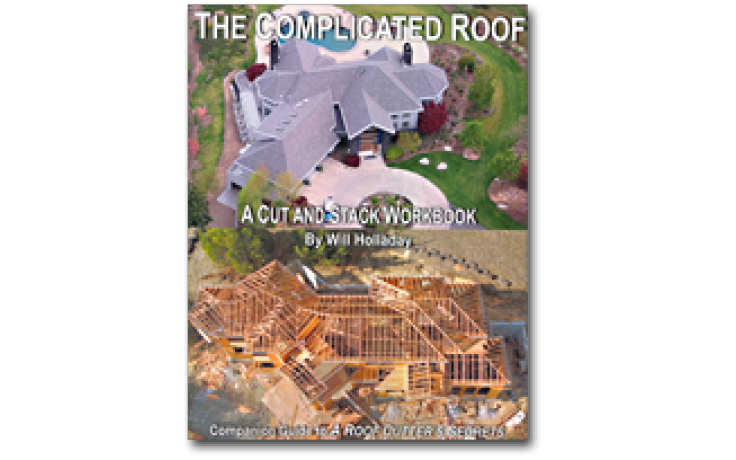Underneath it All: Roof Deck Replacement Can Be the Most Crucial Part of a Re-Roofing Project


The performance of metal decking is dependent on a variety of factors, including age, neglect, and harsh chemical environments, and re-roofing projects can involve partial or total deck replacement.

ACT Metal Deck Supply has more than a dozen locations across the country. The company is run by (standing, from left) Nick Polizzi, president; Michael Polizzi, sales manager; Vince Polizzi, vice president of operations; and (seated) Carm Termini, marketing director.



It’s the part of the roof that gets even less attention than the roof. Hard to notice or even see in many cases, the job of the roofing deck is to hold up the thing that keeps everything dry. Not a big deal — unless it has suffered years of neglect and abuse.
If the roofing is in bad shape, it doesn’t bode well for the decking. Roofing damage is easy enough to assess, but figuring out how bad a deck is before the tear-off is a complex equation. And if one spot is bad, who knows what shape other sections of the roof might be in. A bad deck can create the biggest hole of all — one that more than water can enter.
“The biggest fear is falling through the roof, not falling off it,” said Justin Tyler, logistics manager for CentiMark Corporation in Charlotte, N.C.
Metal roof decking has become the dominant platform for many types of buildings. There are a number of different profiles that have been made over the years and maintaining an inventory would be daunting for roofing contractors. Yet, not having the right kind of deck replacement available will stop projects in their tracks.
“Most of our work has been re-roofing work, and we do spot replacement of decking,” said Gene Fowler of Sentry Roofing in Covington, Ind. While conducting estimates, he’s encountered some roofs that can barely support their own weight. “You never know when you’re going to hit something,” he said. “Those things you don’t see unless you do a very thorough investigation.”
One time he found decks that had been cut and were only being held up by the membrane. One of the most memorable deck replacements occurred on a small building that had never had a roofing system; three successive coatings were sprayed directly onto the metal deck, which had to be replaced entirely after a relatively short service life.
Some decking is so old that the profiles are no longer available, but Fowler says that A & B profiles can cover most jobs. Sometimes the old deck needs to be broken loose or new deck is slid underneath and fastened to the joists. After 29 years in the roofing business, Fowler thinks the problem is getting worse. “I do believe that we’re seeing more bad decking than we used to because people are putting off their repairs,” he said.
Bob Pence knows firsthand the importance of having the right materials. As purchasing manager for three offices run by DC Taylor, each bid must include a description of the type of decking.
“It’s important to know what the customer wants and what the profile is to avoid any lead time,” said Pence. “We’ve learned through experience on that.”
Typically, a full deck won’t have to be replaced during a retrofit, unless the building has a corrosive nature. For instance, a battery company in Salina, Kan., needed a complete roof deck replacement. Even the spot replacement or filling in old skylights can complicate jobsites for fall protection. “It can change the whole aspect of the job,” noted Pence. “We try to get up there and look at it from underneath.”
Fixing a deck can hold up a project, as barriers have to be erected while a different crew corrects a dangerous situation that know about.
Decked Out
When Nick Polizzi gets a call from a customer, it’s almost always urgent. Someone took the wrong measurement or a specific profile is needed or the damage to a roof was more extensive than anyone thought — can ACT Metal Deck Supply deliver 2,000 square feet tomorrow?
“When people call up and they need it, we can take care of them,” said Polizzi, who is president of ACT Metal Deck. “It’s not glamorous by any means. We know what our core business is.”
Polizzi has been around metal decks from an early age. While in high school he did errands for a metal deck subcontractor in Chicago. In college he was a union apprentice for a sheet metal firm. He realized that jobs would come to a screeching halt if the decking couldn’t be replaced. After college, he and his dad, Nick A. Polizzi, began to install new metal decks and eventually kept a ready supply of popular profiles. Instead of weeks or months of waiting for the correct profile, ACT could fill most orders overnight.
“We never even had an inkling of the need for metal deck,” said Polizzi. “What we’ve done is taken a lead time item and put that into our inventory.”
The company quickly grew from one center in the Chicago area to a dozen, with more in the planning stages. In addition to numerous profiles of metal decking, ACT offers panels for corrugated siding and other industrial looks popular in some designs. Polizzi is proud of his innovations, especially same-day delivery. “Fifteen years ago, it didn’t exist,” he said. “Now, that’s not fast enough.”
Problems with the deck aren’t always apparent during the bidding process, so most roofing contractors will insert provisions that address possible issues. Even with protective wording, the need to be in front of the problem is important if the roofing project is going to be successful.
The standard bid from CentiMark, a large roofing concern with a national footprint, includes details about the decking. According to Tyler, the company wants to ensure it specifies the correct profile and amount. Holes that are unusual need to be traced onto paper for precise measurements.
Occasionally, entire decks need to be replaced, like the steam plant in South Carolina that Tyler recently worked on. The humidity from inside the building accelerated the demise of the original deck and 11,000 square feet of Galvalume decking had to be ordered.
“Sometimes when we get over 30 percent damage, I anticipate more and more decking being needed,” Tyler observed.
The demand on roof decks is greater than ever. Their service lives must be extensive while enduring all kinds of neglect. They must endure greater loads and even rooftop gardens. And they must be repaired to their original condition.
“Oh yeah, the deck, anybody can do that,” Polizzi joked about how his core business used to be an afterthought. “But we’re your best friend when it gets complicated.”
Looking for a reprint of this article?
From high-res PDFs to custom plaques, order your copy today!










